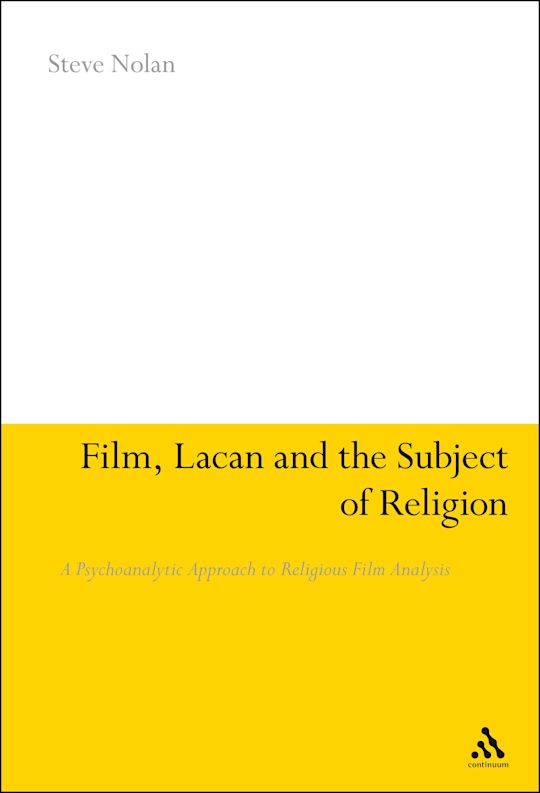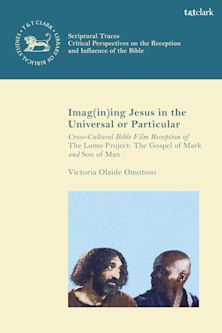- Home
- ACADEMIC
- Religious Studies
- Religion, Film and Media
- Film, Lacan and the Subject of Religion
Film, Lacan and the Subject of Religion
A Psychoanalytic Approach to Religious Film Analysis
Film, Lacan and the Subject of Religion
A Psychoanalytic Approach to Religious Film Analysis
You must sign in to add this item to your wishlist. Please sign in or create an account
Description
Finding many current approaches to religious film analysis lacking, Film, Lacan and the Subject of Religion explores the film theory other writers ignore, particularly that mix of psychoanalysis, Marxism and semiotics - often termed Screen theory - that attempts to understand how cinematic representation shapes spectator identity. Using translations and commentary on Lacan not originally available to Screen theorists, Nolan returns to Lacan's contribution to psychoanalytic film theory and offers a sustained application to religious practice, examining several 'priest films' and real-life case study to expose the way liturgical representation shapes religious identity. Film, Lacan and the Subject of Religion proposes an interpretive strategy by which religious film analysts can develop the kind of analysis that engages with and critiques both cultural and religious practice.
Table of Contents
An Overview
Part 1 Current approaches to religious film analysis
1 Phenomenological interpretations: film as sacrament
2 Literary interpretations: film as visual story
3 Anthropological interpretations: film as religion
Part 2 Representation in liturgy and film
4 Liturgical representation: 'others', narratives and ideological 'realities'
5 Cinematic representation: 'others', narratives and ideological 'realities'
Part 3 What can film theory offer liturgy?
6 Cinematic identification: suture and narrative space
7 Suturing suture: joining the theory together
8 Suturing religious identity in the sacramental narrative
By way of analysis
Product details
| Published | 23 Jul 2009 |
|---|---|
| Format | Ebook (PDF) |
| Edition | 1st |
| Extent | 232 |
| ISBN | 9781441116338 |
| Imprint | Continuum |
| Publisher | Bloomsbury Publishing |
About the contributors
Reviews
-
"In this engrossing and provocative study, Steve Nolan explores the insights which film theory has to offer to the study of religion and film. Rather than focusing on theological meanings or religious narratives within the film, Nolan argues that it is in the effects on the spectator that we discover the analogy between liturgy and cinema. Engaging closely with the theoretical perspectives of the journal Screen and with Lacanian psychoanalysis, Nolan opens up exciting new possibilities for approaching the liturgy as a form of participative representation, analogous to film, and the implications of this for the construction of religious identities, the transmission of religious ideology, and the role of the priest in the liturgical performance." - Professor Tina Beattie, Roehampton University, UK
-
"Steve Nolan's book is a genuinely creative advance in the study of religion and film, establishing a new sense of their relationship through an understanding of film as liturgical experience, and thus suggesting a highly original answer to the question, "What can film theory offer liturgy?" It is a challenging read in its powerful theoretical grounding of the experience of cinema in Lacanian theory of dreams, but the rewards are considerable in the series of brilliant readings of the role of priests in individual films from Bing Crosby's Father Chuck O'Malley in the 1945 The Bells of St. Mary's to Jeremy Irons in The Mission and Henry Fonda in The Fugitive. This book takes the study of film and religion onto a new level of critical and theological sophistication, challenging alike to film theory and to theology and liturgical studies." - Professor David Jasper, University of Glasgow, UK
-
"This is an original and thought-provoking book. Nolan provides an intelligent, nuanced and critical invitation to consider what the insights of Lacanian pyschoanalysis, 'Screen film theory' and liturgical participation can contribute to the study of both film and religion. Hollywood hits, such as Air Force One, and more controversial productions, such as The Siege, are put to creative use to illustrate his sophisticated argument. Drawing on a wide range of other films and theorists, Film, Lacan and the Subject of Religion is a significant and stretching contribution to the rapidly evolving area of study related to film, religion and theology." - Dr Jolyon Mitchell, University of Edinburgh, UK

ONLINE RESOURCES
Bloomsbury Collections
This book is available on Bloomsbury Collections where your library has access.
































